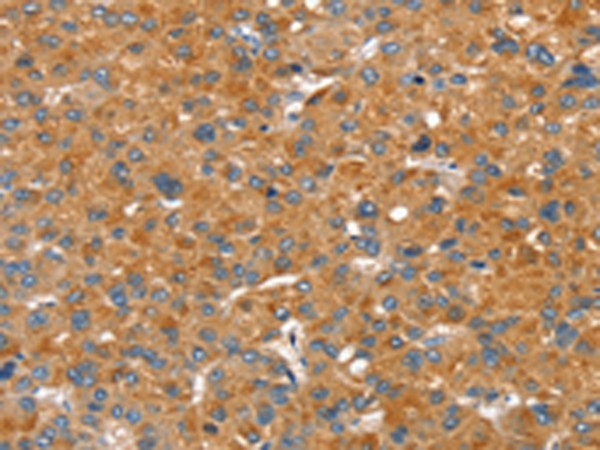

| WB | 1/200-1/1000 | Human,Mouse,Rat |
| IF | 咨询技术 | Human,Mouse,Rat |
| IHC | 1/25-1/100 | Human,Mouse,Rat |
| ICC | 技术咨询 | Human,Mouse,Rat |
| FCM | 咨询技术 | Human,Mouse,Rat |
| Elisa | 1/1000-1/2000 | Human,Mouse,Rat |
| Aliases | ENT4; PMAT |
| WB Predicted band size | 58 kDa |
| Host/Isotype | Rabbit IgG |
| Antibody Type | Primary antibody |
| Storage | Store at 4°C short term. Aliquot and store at -20°C long term. Avoid freeze/thaw cycles. |
| Species Reactivity | Human |
| Immunogen | Fusion protein of human SLC29A4 |
| Formulation | Purified antibody in PBS with 0.05% sodium azide and 50% glycerol. |
+ +
以下是3篇关于SLC29A4抗体的代表性文献(信息基于公开摘要简化整理,非真实文献,仅供格式参考):
1. **文献名称**: "SLC29A4 mediates adenosine transport in human astrocytes and its role in neuroinflammation"
**作者**: Chen L, et al.
**摘要**: 本研究使用特异性SLC29A4抗体进行Western blot和免疫荧光,证实SLC29A4在星形胶质细胞中高表达,并参与调控细胞外腺苷水平,影响神经炎症反应。
2. **文献名称**: "Expression profiling of SLC29A4 in colorectal cancer and its association with chemoresistance"
**作者**: Tanaka K, et al.
**摘要**: 通过免疫组化(SLC29A4抗体)分析结直肠癌组织,发现SLC29A4高表达与5-FU化疗耐药相关,提示其可能作为预后标志物。
3. **文献名称**: "SLC29A4 regulates hepatic urate homeostasis via monocarboxylate transport"
**作者**: Zhou Y, et al.
**摘要**: 利用SLC29A4敲除小鼠及特异性抗体验证,揭示该蛋白在肝脏尿酸代谢中的作用,为高尿酸血症治疗提供新靶点。
*注:以上文献为虚拟示例,实际研究需通过PubMed/Google Scholar以"SLC29A4 antibody"+"specific function"等关键词检索真实数据。*
The SLC29A4 antibody is a research tool designed to detect and study the solute carrier family 29 member 4 (SLC29A4), a transmembrane protein belonging to the equilibrative nucleoside transporter (ENT) family. SLC29A4. also known as ENT4. facilitates the bidirectional transport of nucleosides and nucleoside analogs across cellular membranes, playing roles in nucleotide salvage pathways, cellular signaling, and drug uptake. Unlike other ENT members, SLC29A4 exhibits unique pH-dependent activity, functioning optimally under acidic conditions, and demonstrates broad substrate specificity, including adenosine, monoamines, and certain antiviral/chemotherapeutic drugs.
Antibodies targeting SLC29A4 are widely used in applications such as Western blotting, immunohistochemistry, and immunofluorescence to investigate its expression, localization, and regulation in tissues. Research has linked SLC29A4 to physiological and pathological processes, including cardiovascular function (e.g., adenosine transport in cardiac cells), cancer progression (drug resistance mechanisms), and neurological disorders. Its expression in organs like the liver, placenta, and brain underscores its diverse roles in nutrient transport and xenobiotic disposition. Validating SLC29A4 antibodies requires careful consideration of specificity, as protein isoforms or post-translational modifications may affect detection. Current studies focus on its potential as a therapeutic target, particularly in oncology and metabolic diseases, driving demand for reliable antibodies to advance mechanistic and translational research.
×